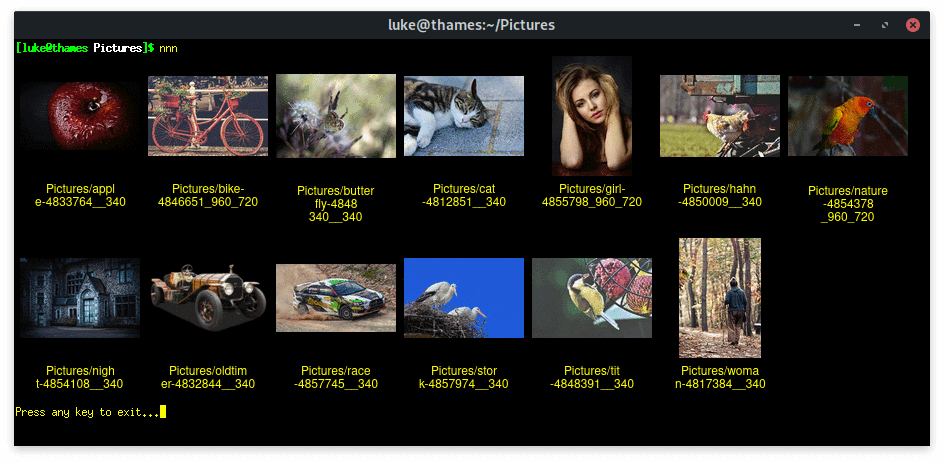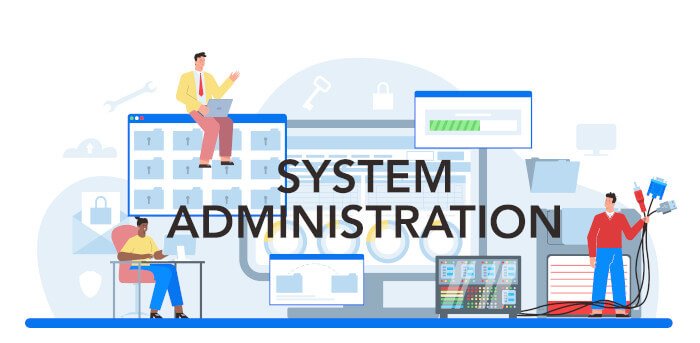Last Updated on May 28, 2022
Plugins
To make the file manager extensible, the developer offers a framework for plugins. A plugin can be any executable with which nnn can interact with.
At the time of writing, nnn offers 40 plugins offering a variety of additional functionality. Some of the plugins require external programs that aren’t pre-installed with a fresh Linux installation. Fortunately, they are all available from my distro’s repositories.
The plugins can be installed with the command:
You can define the plugin keybindings by setting the NNN_PLUG environment variable e.g.
I’ll just look at a couple of the potentially most useful (from my perspective).

The first is imgthumb. To use this plugin you need lsix installed on your system. lsix shows thumbnails in a terminal.
To use lsix, you also need to invoke it from a sixel capable terminal. This is an issue, as the vast majority of terminal emulators aren’t sixel capable. You can either view a single image or a whole directory. Press ; which lists the plugin keys you’ve defined in the NNN_PLUG environment variable. Select a directory with images, and press t. You’ll view all the images in that directory without leaving the terminal. Of course, you don’t need a plugin to view image files. Just press the key l, and it opens files (including images).
I’m a huge music enthusiast. There’s a plugin called boom which plays random music from a directory. It supports mp3, FLAC, m4a, webm, and wma formats.
Next page: Page 5 – Memory Usage & Comparison with other console-based file managers
Pages in this article:
Page 1 – Introduction / Installation
Page 2 – In Operation
Page 3 – Disk usage analyzer
Page 4 – Plugins
Page 5 – Memory Usage & Comparison with other console-based file managers
Page 6 – Summary

What optimizations does nnn use? The developer’s website seems unclear on this.
You’ll find the details here: https://github.com/jarun/nnn/wiki/Performance
Thanks, that’s very interesting.